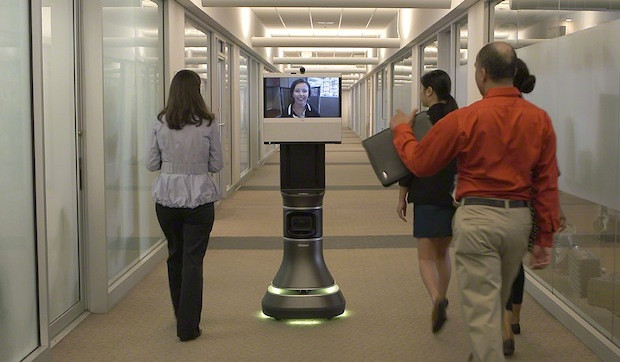Channel 4 Humans: Will humanoid robot companions ever become a reality?

In Channel 4's futuristic sci-fi TV series Humans, robot companions are affordable and most middle-class families have one to do their household chores and take care of their children, similar to the 1999 film Bicentennial Man, where Robin Williams plays a robot butler.
But are we likely to have our own robot companion anytime soon? Probably not. "We've got humanoid robots but they're far too expensive for the household," Professor Noel Sharkey tells IBTimes UK.
"People talk about IBM Watson beating the world chess champion, but if you look at robotics, it's not very far forward compared to where it should be. The DARPA Robotics Challenge robots are at the forefront of where we are, and they are unusually far forward, but they are not very far."
The development of humanoid robots

There are humanoid robots being developed in Japan, such as Otonaroid and Kodomorid at the Miraikan built by Japanese robotics expert Hiroshi Ishiguro, who also helped to develop Toshiba's robot hostess ChihiraAico, but these robots are "just the cosmetics" according to Sharkey, as they only look like humans, but do not have a great deal of brain power behind them.
In the US, Hanson Robotics has been able to create a robot head called Han that can make eye contact, understand human emotions and respond in kind, but it is not always accurate, and that is the most advanced that robotics have got to today, in terms of conveying emotions.
Instead, Sharkey thinks humanoid robots with the bipedal ability to walk on two legs should be used to run up stairs, turn objects and save people during disaster situations, like the Shipboard Autonomous Firefighting Robot (SAFFiR) being tested by the US Navy.
We must be careful of ceding too much control to robots
Stephen Hawking and Elon Musk fear robots will take over our lives and there must be fail-safes in place to prevent computers from having absolute control, which is why Musk invested $10m (£6.4m) into artificial intelligence safety.
"Many in the robotics industry think that what Hawking and Musk say is ridiculous. I share concerns with them, but not the same concerns. The big worry is, how much control do we cede to a fully automated system? We're automating everything and employment will be affected in a big way," says Sharkey.
"I don't mind delegating the decision about whether my floor is dirty and whether to mop it, but in the US, they're now using robots to calculate statistics about which patients in comas should have life support switched off, and people are believing the robots rather than making the choice themselves.
"It's time people sat down and think about it. What Hawkings and Musk are doing is alerting people to talk about it."
However, even then, Sharkey still does not feel confident enough to know whether complex robot companions, humanoid or not, will be ready even in the next 200 years, because predictions about robotics are never correct.
"Artificial intelligence has already collapsed completely five times since it started due to false expectations, which then causes the funding to dry up so I really can't tell," he says.
Telerobots and sex robots might be the way

Otherwise, robots do not necessarily need to look like humans at all or have legs – that is the belief of iRobot CEO Colin Angle, who is behind the tread-based PackBot used by the military and the robot vacuum cleaner Roomba.
"I agree with Angle that legs aren't essential, but if you look at household robots today, you need one to clean the carpet and one to mop it. The really hard thing to do is to create something that is multi-functional – we're still too far away from that," says Sharkey.
However, according to the professor, telepresence robots, which enable humans to remotely navigate around an office building hundreds of miles away, and sex dolls that can talk back, will be the next biggest new developments in robotics, as that's where all the money can be made.
Sharkey adds: "There's lots of money to be made in sex robots, and one of the biggest growths in robots are the telepresence robots. We're going through a long phase of that before we ever have humanoid robots do it for us."
© Copyright IBTimes 2025. All rights reserved.






















